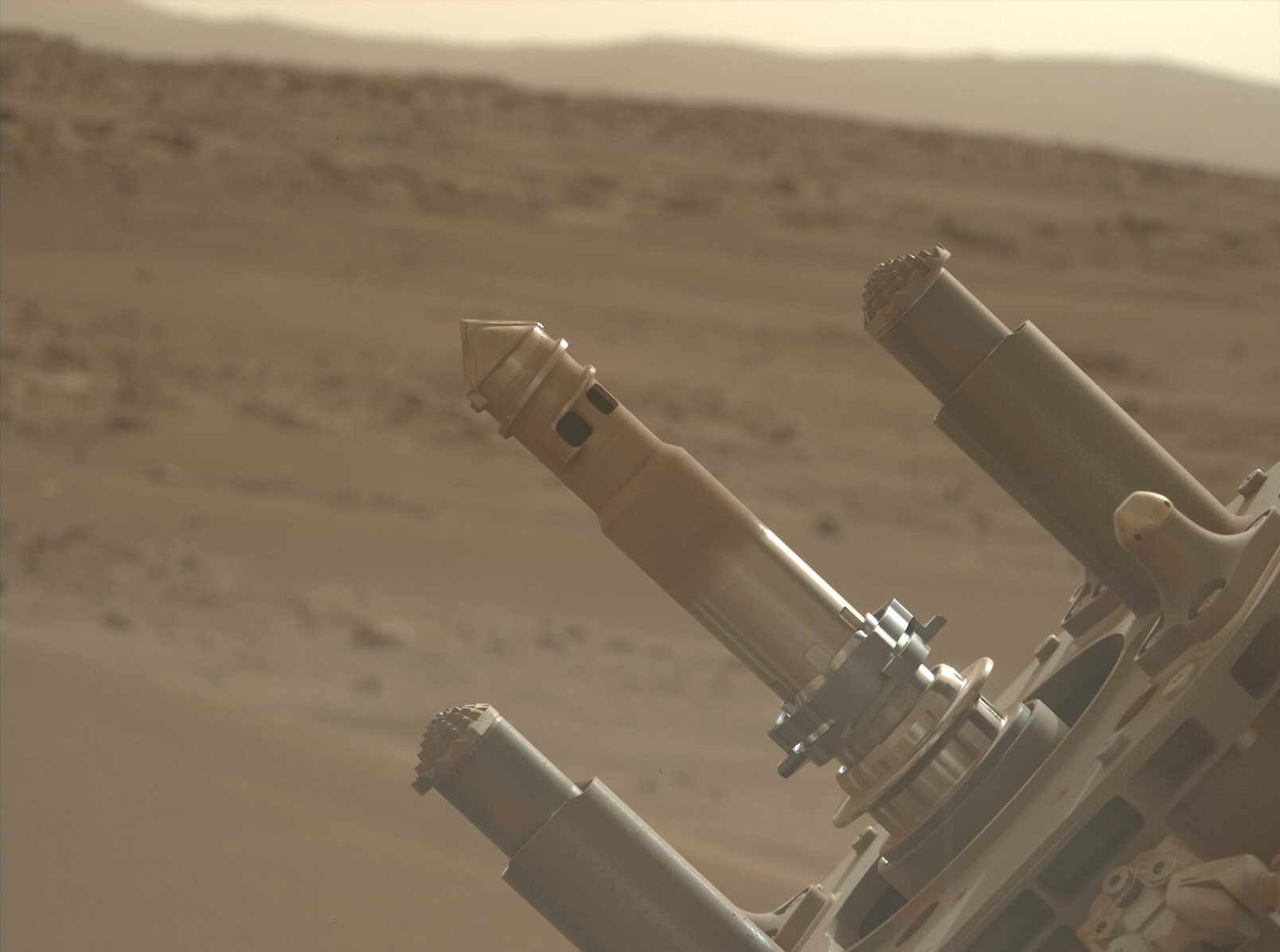Usually, to collect samples on Mars, the NASA rover explores stones and rocks. But it had never before paid attention to the most common material on the planet — sand, or regolith. This is the main part of the Martian landscape. Now a handful of regolith has been added to the Perseverance rover sample system.

NASA announced the first successful collection of regolith this week on its Twitter page. Prior to that, the rover focused on drilling rock samples, but all this time the drill had unused holes with a cavity inside — they are used specifically for collecting regolith.
New achievement unlocked! After taking 15 rock cores and one atmospheric sample, I now have my third sample type: “regolith” (loose, sandy material). This specialized, hollow drill bit is another great tool for #SamplingMars.
Read more: https://t.co/59ySl17teW pic.twitter.com/1HBd1UIMhs
— NASA’s Perseverance Mars Rover (@NASAPersevere) December 5, 2022
The nozzle has small holes on the side into which the sandy material gets so that it can be placed in a capsule for safe storage.
Mixture of minerals
Regolith is fragmented pieces of rocks and dust that can travel long distances when powerful Martian winds blow them across the surface of the planet.
“Regolith is important in order to provide an understanding of the global and local Martian landscape,” wrote Perseverance team member Denise Buckner in an update last month. She described the collected material as a mixture of Martian minerals.
An important addition to the collection
Perseverance is currently exploring a long-standing river delta in the Jezero Crater, which has a fascinating history of water on Mars. The rover collects samples of rock, soil and atmosphere with an important goal: to send them to Earth in the future. NASA is already developing an ambitious and challenging Mars Sample Return mission to go after the collection carefully assembled by the rover. The added regolith will be a fascinating addition to it.
Local sand is of no small importance for the future colonization of Mars. Astronauts on the Red Planet will have to work with regolith as a building material or for growing plants. The more we study it, the better prepared we will be for future research.
Earlier we reported that the samples of the Perseverance rover contain mysterious objects.
Follow us on Twitter to get the most interesting space news in time
https://twitter.com/ust_magazine

